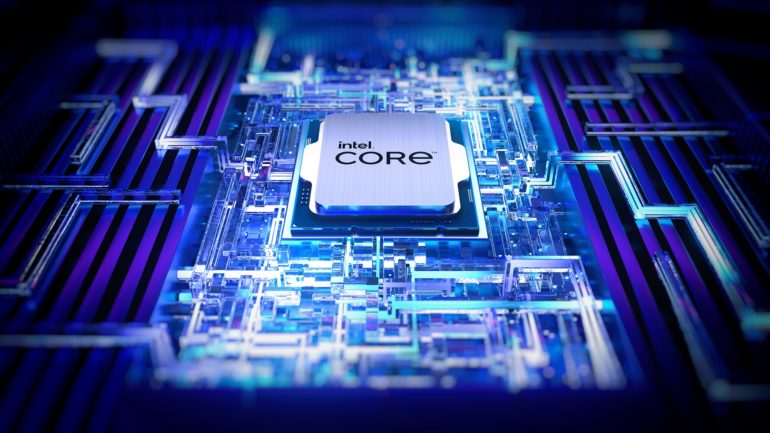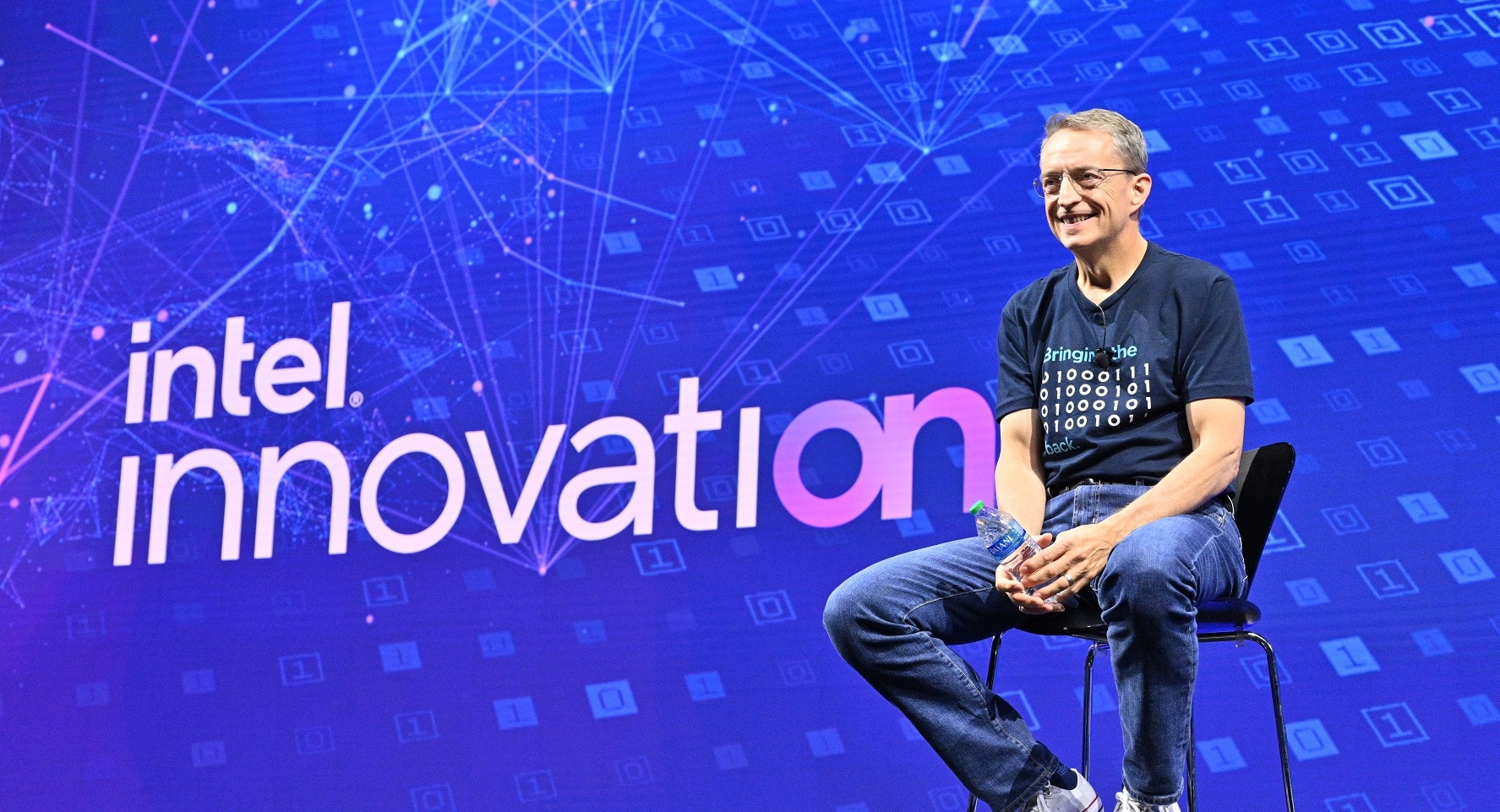At its second annual Intel Innovation event today, hardware and software developers gathered to hear Intel’s latest advancements toward an ecosystem built on the tenets of openness, choice, and trust — from driving open standards to make “systems of chips” possible at the silicon level, to enabling efficient and portable multi-architecture artificial intelligence.
Intel also showcased an array of new hardware, software, and services aimed at helping its broad ecosystem of developers overcome challenges and deliver new generations of innovation.
“In the next decade, we will see the continued digitization of everything. Five foundational technology superpowers — compute, connectivity, infrastructure, AI , and sensing — will profoundly shape how we experience the world,” said Intel CEO Pat Gelsinger. “Developers, both software and hardware focused, will build this future. They are the true magicians that advance what’s possible. Fostering this open ecosystem is at the center of our transformation and the developer community is essential to our success.”
Boosting Developer Productivity with Early Hardware, Simplified AI
In his keynote to open the event, Gelsinger presented a number of challenges that developers face — vendor lock-in, access to the latest hardware, productivity and time-to-market, and security, to name a few — and introduced a multitude of solutions to help overcome them, including:
- New and forthcoming technologies a click away in the Intel Developer Cloud: Starting in a limited beta trial, the Intel Developer Cloud has expanded to give developers and partners early and efficient access to Intel technologies — from a few months up to a full year ahead of product availability. During bthe eta, selected customers and developers can try out and test many of Intel’s latest platforms in the coming weeks, including 4th Gen Intel Xeon Scalable processors (Sapphire Rapids), 4th Gen Intel Xeon processors with high bandwidth memory (HBM), Intel Xeon D processors, Habana Gaudi 2 deep learning accelerators, Intel Data Center GPU (code-named Ponte Vecchio) and Intel Data Center GPU Flex Series.
- Computer vision AI, built faster and easier: The new and collaborative Intel Geti computer vision platform (formerly Sonoma Creek) enables anyone in the enterprise — from data scientists to domain experts —?to quickly and easily develop effective AI models. Through a single interface for data upload, annotation, model training, and retraining, Intel Geti reduces the time, AI expertise, and cost needed to develop models. With built-in optimizations for OpenVINO, teams can deploy high-quality computer vision AI within their enterprises to drive innovation, automation, and productivity.
The Intel Developer Cloud, together with developer tools and resources designed to optimize performance including Intel one API toolkits and the Intel Geti platform, can help accelerate the time to market for solutions built on Intel platforms.
Expanded Technology Portfolio Offers Flexibility and Choice
Gelsinger also used the occasion to present the latest advances across Intel’s product portfolio, including:
- A new standard for desktop processor performance: 13th Gen Intel Core desktop processors, led by the flagship Intel Core i9-13900K, help users better game, create, and work with up to 15% better single-threaded performance and up to 41% better multi-threaded performance gen-over-gen.
- A big step for Intel GPUs: Gelsinger provided updates across Intel’s graphics products, a key area of growth for Intel. Server blades with the Intel Data Center GPU, code-named Ponte Vecchio, are now shipping to Argonne National Laboratory to power the Aurora supercomputer.
- New workloads for Flex Series GPUs: The Intel Data Center GPU Flex Series, announced in August, gives customers a single GPU solution for a wide range of visual cloud workloads. It will now run popular industry AI and deep learning frameworks, including OpenVINO, TensorFlow, and PyTorch. AI neuroscience customer Numenta, working in collaboration with Stanford University on real-world inference workloads on MRI data using Intel’s Flex Series GPU, is reporting amazing performance results.
- Intel Arc GPUs for gamers: Intel is committed to bringing back price and performance balance for gamers with the Intel Arc graphics family. The Intel Arc A770 GPU will be available in a variety of designs at retail starting at $329 on Oct. 12, providing compelling content creation and 1440p gaming performance.
- A high-fidelity AI boost for games: XeSS, or Xe Super Sampling, a gaming performance accelerator that works across Intel discrete and integrated graphics, is now rolling out to existing games through updates and will be available in more than 20 titles this year. The XeSS software developer kit is also now available on GitHub.
- Many devices, one experience: Intel Unison is a new software solution that provides seamless connectivity between phones (Android and iOS) and PCs — starting with functionality including file transfer, text messaging, phone calls, and phone notifications — coming to new laptops starting later this year.
- Data center acceleration, on demand: 4th Gen Intel Xeon Scalable processors include a number of accelerators for AI, analytics, networking, storage, and other demanding workloads. Through the new Intel On Demand activation model, customers can turn on additional accelerators, beyond the base configuration of the original SKU, for greater flexibility and choice when needed.
Systems Foundry Opens ‘New Era for Chipmaking’
Leaders from Samsung and TSMC joined Gelsinger in his keynote to voice support for the Universal Chiplet Interconnect Express (UCIe) consortium, which aims to create an open ecosystem for enabling chiplets designed and manufactured on different process technologies by different vendors to work together when integrated with advanced packaging technologies. With the three largest chipmakers and more than 80 of the leading companies in the semiconductor industry joining UCIe, “we are now making it a reality,” Gelsinger said.
To lead this platform transformation enabling new customer and partner solutions with chiplets, Gelsinger explained that “Intel and Intel Foundry Services will usher in the era of the systems foundry,” with four major components: wafer manufacturing, packaging, software, and an open chipset ecosystem. “Innovation once thought impossible has opened entirely new possibilities for chipmaking,” Gelsinger said.
Intel previewed another such innovation in development: a breakthrough pluggable co-package photonics solution. Optical connections hold promise to enable new levels of chip-to-chip bandwidth, particularly in the data center, but manufacturing difficulties make them untenably expensive. To overcome this, Intel researchers devised a robust, high-yielding, glass-based solution with a pluggable connector that simplifies manufacturing and lowers costs, opening possibilities for new system and chip package architectures in the future.
Building the future requires software, tools, and products, and it also requires funding. Early this year, Intel launched the $1 billion IFS Innovation Fund to support early-stage startups and established companies building disruptive technologies for the foundry ecosystem. Today, the company announced the first round of companies that have received funding, a diverse group innovating across the entire semiconductor stack. The first round includes:
- Astera is a leader in purpose-built data and memory connectivity solutions to remove performance bottlenecks throughout the data center.
- Movellus, helps improve system-on-chip performance and power consumption and simplifies timing closure with a unique platform that solves clock distribution challenges.
- SiFive, developing high-performance cores based on the open-source RISC-V instruction set architecture
This is just the beginning of the news from Intel Innovation. Tune in at 8:30 a.m. PDT Wednesday to hear from Intel Chief Technology Officer Greg Lavender on how ubiquitous computing is creating endless opportunities for innovating at the speed of software and what Intel is doing to help developers unleash their potential. He’ll show more peeks into the future, and share the stage with a surprise guest, too.


